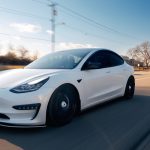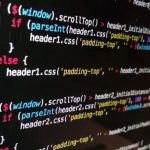Tesla continues to advance its autonomous vehicle offerings by preparing for a potential launch of Robotaxi services in new markets. Recent sightings of Model Y validation vehicles equipped with LiDAR systems in Tempe, Arizona, indicate that Tesla is actively conducting ground truth testing, which is important for confirming the accuracy of its camera-based vision systems. Unlike direct integration into production Robotaxi fleets, the use of LiDAR is limited to validation phases rather than regular service vehicles. As the company expands its pilot programs, regulatory approval remains a necessary step before officially operating in additional states.
Earlier developments in California and Texas saw the deployment of Tesla Robotaxi services with significant geofenced areas: 400 square miles in the Bay Area and 173 square miles in Austin. While previous reports speculated about possible entries into Nevada or Florida, ongoing tests in Arizona suggest the company is favoring locations with established autonomous vehicle infrastructure and regulatory frameworks. The expansion strategy appears more systematic compared to Tesla’s previous, slower rollouts of Autopilot in select metropolitan regions several years ago.
How Does Tesla Approach Safety and Accuracy?
Tesla has emphasized the importance of safety in its autonomous driving tests. The company relies on vision-based artificial intelligence but supplements this with LiDAR during validation to ensure system precision. A company representative has stated,
“LiDAR allows us to confirm what our vehicles’ cameras interpret in real-world environments.”
This method supports Tesla’s goal of validating the reliability of their vision suite before full operational deployment.
What Is the Current Status of Robotaxi Availability?
Currently, Tesla Robotaxi services can be accessed in Austin and the Bay Area, with further expansions under consideration pending regulatory approval. Users interested in participating can download the newly released Tesla Robotaxi app, join a waitlist, and potentially gain early access to ride-hailing. According to CEO Elon Musk,
“We’re aiming for Robotaxi to be accessible by half the U.S. population this year.”
Expansion to markets like Arizona reflects this broader ambition.
What Role Does the App Play in User Engagement?
The introduction of the Tesla Robotaxi app on iOS has facilitated user engagement and feedback. By joining the waitlist, riders help inform where demand is greatest and aid in structured expansion. Download metrics for the app have reportedly surpassed those of other ride-hailing competitors, suggesting heightened public interest in autonomous vehicle rides.
The rollout of Tesla’s Robotaxi services into new territories underscores the importance of localized validation and regulatory considerations in deploying autonomous vehicles. Unlike previous launches of Tesla’s driver assistance features, the Robotaxi approach prioritizes region-specific testing to address local challenges. This targeted method contrasts with strategies adopted by some competitors that introduced broader multi-city launches. For readers interested in developments within autonomous transportation, tracking such validation activities and app engagement data can offer valuable insights into adoption trends and regulatory progress. Understanding these incremental steps provides a clearer view of how autonomous vehicle services may continue to scale across the U.S., with user engagement playing a central role in shaping expansion priorities.










